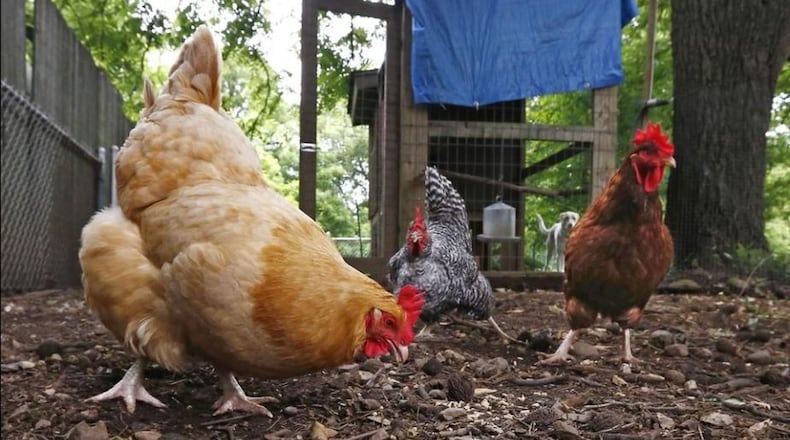The illness is linked to the interaction people are having with live poultry. In some cases, chickens may be treated as pets. The more people let live poultry into their backyards and near their homes, the more they are exposed to the bacteria that causes salmonella.
» RECALL: Lay’s chips recalled for potential Salmonella contamination
Ohio had the most outbreaks this year — 37 cases of salmonella reported between Jan. 4 and June 6 — followed by Kentucky, Tennessee and California. In 2016, there was a record 895 cases of salmonella connected to pet poultry, according to the CDC.
Kim Machesky, an epidemiologist at Ohio Department of Health, said illnesses related to backyard chickens have been on the rise in recent years in the state.
“We’ve unfortunately had experience with this,” she said. “We’ve had cases with salmonella linked to live poultry every year since 2011. This happens every spring usually when baby poultry is for sale. We kind of start tracking these early on and see our first few cases in March every year.”
A few cases have been confirmed in Franklin, Delaware and Licking counties, but local officials say they have not had any outbreaks or singular cases linked to pet poultry. A spokeswoman for the Clark County Combined Health District in Springfield said the county did not have any reported cases yet this year, and couldn’t recall any cases linked to pet poultry in recent years.
Dan Suffoletto, spokesman for Public Health-Dayton & Montgomery County, said 16 salmonella cases have been reported in the county this year, but none were directly linked to backyard chickens. And, there have been no outbreaks linked to poultry this year either.
» RELATED: Company recalls Walmart brand macaroni and cheese cups, others
“If you’re playing with any type of animal you want to make sure you’re washing your hands and taking precautions that way,” Suffoletto said. “Another thing is with the chickens, you don’t want to let the chickens inside the house. Some people will let the chickens inside, you don’t want to let the chickens inside, particularly in areas where you’re cooking.”
Children and people with weakened immune systems are at the biggest risk of contracting salmonella. According to CDC, 36 percent of people affected in 2017 were children under the age of 5.
“Children younger than five and adults over 65 should not be handling live poultry because those people are more at risk of infection,” Machesky said.
Salmonella lives in the intestinal tract of humans and animals, and people can contract the illness when consuming foods such as meat, eggs or unpasteurized dairy if something isn’t cooked correctly. It is also spread through animal feces that sticks on the animal’s feet, beaks and feathers. Symptoms include fever, cramps and diarrhea.
» RELATED: One of the largest U.S. greenhouse farms to open soon north of Dayton
Jim Chakeres, the executive vice president of the Ohio Poultry Association, said the spread all depends on how the poultry is being handled. If people want to have their own poultry in their backyard, they should educate themselves on staying protected from animal-transferred diseases.
“Poultry would naturally carry salmonella,” he said. “While it’s something that’s not passed on routinely with the food, if people are not handling their birds properly it is something that would spread. It’s very important to wash your hands while handing the birds. Also, to make sure to properly clean up after the birds and to make sure we don’t have small children hugging and kissing chickens. These are farm animals and they need to be cared for as such.”
—-
BY THE NUMBERS
37 cases of salmonella reported in Ohio between Jan. 4 and June 6
895 cases of salmonella connected to pet poultry in 2016 in U.S.
372 people in 47 states have been infected
Source: Center for Disease Control
